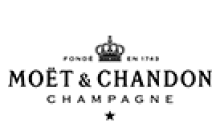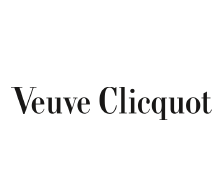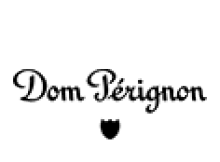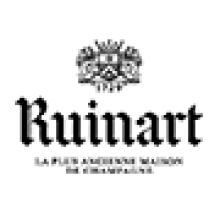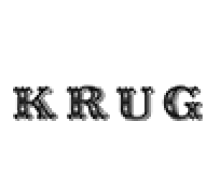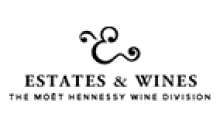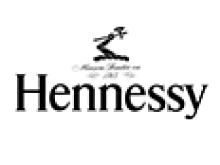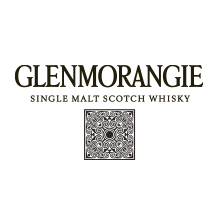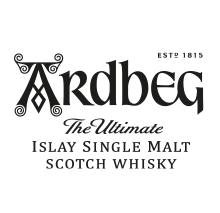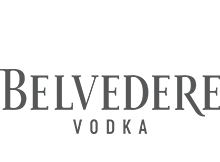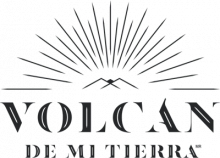Bitte genießen Sie die Produkte von Moët Hennessy verantwortungsvoll. Mehr zu unserer Corporate Responsibilty erfahren Sie hier.
Bitte genießen Sie die Produkte von Moët Hennessy verantwortungsvoll.
|
Languages
x
Ruinart
ART CONNECTED TO THE LIVING WORLD
COUNTDOWN TO THE 300 YEARS OF RUINART HOUSE
COUNTDOWN TO THE 300 YEARS OF RUINART HOUSE
TO OUR ROOTS
On the eve of its fourth centenary, Ruinart has chosen to combine art and artificial intelligence in an immersive, sustainable and self-contained installation that is driven by life itself.
In September 2029, Ruinart, the oldest champagne house, will be celebrating its 300th anniversary. Over the course of its rich history, it has fostered partnerships with artists such as Alphonse Mucha in 1896, and more recently taking part in the world’s largest art fairs through an annual carte blanche programme, granted by Ruinart to a different contemporary artist each year. This project has enabled Ruinart to present its heritage, history and know-how from a series of innovative angles, through the vision and preferred medium of the chosen artist. In the lead-up to this important anniversary, Ruinart has commissioned a work of art from the Mouwad Laurier duo, entitled Retour aux sources, which brings data, artificial intelligence and the living world together in an immersive experience.
In September 2029, Ruinart, the oldest champagne house, will be celebrating its 300th anniversary. Over the course of its rich history, it has fostered partnerships with artists such as Alphonse Mucha in 1896, and more recently taking part in the world’s largest art fairs through an annual carte blanche programme, granted by Ruinart to a different contemporary artist each year. This project has enabled Ruinart to present its heritage, history and know-how from a series of innovative angles, through the vision and preferred medium of the chosen artist. In the lead-up to this important anniversary, Ruinart has commissioned a work of art from the Mouwad Laurier duo, entitled Retour aux sources, which brings data, artificial intelligence and the living world together in an immersive experience.

COUNTING DOWN TO THE 4TH CENTURY
The excellence of Ruinart’s wines is deeply rooted in its terroir and exceptional savoir-faire. The first established champagne house, founded 290 years ago, is well aware of and respects both its heritage and the men and women who tirelessly pass on their know-how from generation to generation. Before embarking on its fourth century, Maison Ruinart has the bold ambition to become the most responsible champagne house in terms of social and environmental issues. And that means becoming both a leader and a source of inspiration.
One of the keys to achieving this ambition is to find a way of bringing art and sustainability together. Each year from now on, Maison Ruinart will commission a new artistic or architectural project in Reims that integrates sustainability into its innovation and creativity. It all begins this year in September, with an immersive installation created by a duo of up-and-coming artists who achieve surprising results by sustainably combining technological innovation with art.
One of the keys to achieving this ambition is to find a way of bringing art and sustainability together. Each year from now on, Maison Ruinart will commission a new artistic or architectural project in Reims that integrates sustainability into its innovation and creativity. It all begins this year in September, with an immersive installation created by a duo of up-and-coming artists who achieve surprising results by sustainably combining technological innovation with art.
THE CONCEPT
The artistic project Retour aux sources is the brainchild of a pair of environmental artists known as Mouawad Laurier, and marks the beginning of the 10-year countdown to the 300th anniversary of Maison Ruinart on 1 September 2029.
The work takes the form of a root planted in an ancient crayère chalk cellar. The root listens to what is happening within its natural surroundings above, and immerses the audience in a visual and sound experience 30 metres below ground. Deep inside the earth, where there used to be an ocean, the audience is confronted with the physical and temporal character of humanity.
The root, endowed with sensitive intelligence, listens to the natural elements involved in the champagne production process through a device that uses complex artificial intelligence. It reminds us that human beings and nature are intrinsically connected.
The work takes the form of a root planted in an ancient crayère chalk cellar. The root listens to what is happening within its natural surroundings above, and immerses the audience in a visual and sound experience 30 metres below ground. Deep inside the earth, where there used to be an ocean, the audience is confronted with the physical and temporal character of humanity.
The root, endowed with sensitive intelligence, listens to the natural elements involved in the champagne production process through a device that uses complex artificial intelligence. It reminds us that human beings and nature are intrinsically connected.
THE ARTISTS
Mouawad Laurier is the collective name for two artists who work and live together.

Mouawad Laurier is the collective name for two artists who work and live together.

They started using AI in 2006, and Retour aux sources combines elements of the work they have presented in the past.
- Maya Mouawad
How can they change the way we perceive ourselves in relation to nature?
Her installations usually involve technological tools such as artificial intelligence, lights and generative sound. Working with Cyril Laurier, she co-created Hand Coded, a platform for developing tools and technologies for artists. She has also collaborated with many other artists such as Pablo Valbuena, Romain Tardy, Viktoria Modesta and Ezra.
- Cyril Laurier
He now applies his knowledge of artificial intelligence to art, notably questioning how humans interact with technology and nature.
As a musician, he is interested in generating new types of sound. He has developed tools for music labels such as Sony and Eventide, as well as for performers like Beardyman and Ezra.
This technology enthusiast tackles the issue from all angles, from the creation of electronic devices to the development of artificial intelligence software.
DATA
Retour aux sources is an autonomous entity that inhabits the crayère chalk cellar, and is able to perceive the world around it. It expresses the changes in seasons, climate, wind, and temperature, as well as the phases in winemaking including budbreak, harvest, fermentations, riddling, maturation, and so on. And generates genuine emotion in the visitors who experience it.
Artificial intelligence techniques need data to exist. The root feeds on the data provided by the vineyard, wine production and climate. Depending on the season, the root will react in different ways to key indicators it is given.
Artificial intelligence techniques need data to exist. The root feeds on the data provided by the vineyard, wine production and climate. Depending on the season, the root will react in different ways to key indicators it is given.
THE 7 ELEMENTS OF THE WORK


No.1 : A PLACE
Dozens of meters below earth, there is a place where time stands still: the Ruinart crayère chalk cellars, now a UNESCO World Heritage Site. This layer of chalk once formed the bottom of an ocean that has long since been forgotten. With Retour aux sources we are striving to reconnect with our roots, those at our very core and origin.
Like a source, which is also a place for sharing and meeting, Retour aux sources strives to connect people to their origins, to their inner self.
No.2 : A ROOT
A vine draws nutrients through its roots, acquiring all the minerals it needs to live. The root is also a complex network that offers vine plants a way to communicate among themselves. A root is therefore full of meaning. The sculpture presented here is of a root feeding on a network of neurons, and emphasises the conscious intelligence of nature.
This root is planted in chalk, because the elegance of champagne and its complex flavours all derive from chalk.
No.3 : LIGHT & SOUND BUBBLES
Each hand-crafted Murano glass bubble represents the importance of the minerals and water that feed the root. These lamps generate the effects evoked by dazzling light refraction, especially when it occurs under water. Sound devices also move through the space.
Seeing these light effects reminds the viewer of the ocean that once engulfed the chalk walls that stand in the cellars today.
No.4 : RELATIONSHIPS WITH SCALE
The result of both sedimentation and fossilisation, the thick chalk layers took millions of years to form.
Since ancient times, men have dug out this chalky soil by hand to shape incredible underground cathedrals.
Now countless miniature sources of light (LEDs) have been installed in these immense spaces, they can become the backdrop for extraordinary sound and light presentations. The experience created is a reminder of mankind’s insignificance in both time and space.
No.5 : TEMPORALITY & IA
Artificial intelligence (AI) is used to give the root an idea of its environment and temporary existence.
The type of data it feeds on allows the root to express the present: an instant and constant flow of information through the seasons and passing years.
Provided with its own character and ability to learn, the root continuously develops how it communicates, becoming more sophisticated as time goes by.
No.6 : DATA
The root feeds on data from the living world that it then expresses in its own way using light, colour and sound, as well as movement and rhythm. Its current state reflects what is happening around it, as well as outside, in the vineyards, tanks, cellars and bottles.
The root is connected to the Internet and a set of sensors, so it can analyse and synchronise with what is happening in its environment.
No.7 : THE FRAGILITY OF THE LIVING WORLD
The root feeds on organic data from any given moment, comparing it with the data it already has stored. It provides its own interpretation of its current environment, whilst challenging how the onlooker perceives it.
When experiencing Retour aux sources, the viewer is encouraged to question the role of mankind within nature and how interdependent our ecosystems must be. Maison Ruinart has purposefully chosen to embark upon a long-term sustainable development approach because it believes no human product really lasts unless it is created with respect for its environment. This approach involved many fundamental components: from vineyard to winemaking, from waste management to green energy, from eco-designed packaging to shipping, not to mention the transmission of savoir-faire.
Retour aux sources is one of many initiatives, in this case an artistic initiative, designed to develop awareness amongst a wider audience.
Dozens of meters below earth, there is a place where time stands still: the Ruinart crayère chalk cellars, now a UNESCO World Heritage Site. This layer of chalk once formed the bottom of an ocean that has long since been forgotten. With Retour aux sources we are striving to reconnect with our roots, those at our very core and origin.
Like a source, which is also a place for sharing and meeting, Retour aux sources strives to connect people to their origins, to their inner self.
No.2 : A ROOT
A vine draws nutrients through its roots, acquiring all the minerals it needs to live. The root is also a complex network that offers vine plants a way to communicate among themselves. A root is therefore full of meaning. The sculpture presented here is of a root feeding on a network of neurons, and emphasises the conscious intelligence of nature.
This root is planted in chalk, because the elegance of champagne and its complex flavours all derive from chalk.
No.3 : LIGHT & SOUND BUBBLES
Each hand-crafted Murano glass bubble represents the importance of the minerals and water that feed the root. These lamps generate the effects evoked by dazzling light refraction, especially when it occurs under water. Sound devices also move through the space.
Seeing these light effects reminds the viewer of the ocean that once engulfed the chalk walls that stand in the cellars today.
No.4 : RELATIONSHIPS WITH SCALE
The result of both sedimentation and fossilisation, the thick chalk layers took millions of years to form.
Since ancient times, men have dug out this chalky soil by hand to shape incredible underground cathedrals.
Now countless miniature sources of light (LEDs) have been installed in these immense spaces, they can become the backdrop for extraordinary sound and light presentations. The experience created is a reminder of mankind’s insignificance in both time and space.
No.5 : TEMPORALITY & IA
Artificial intelligence (AI) is used to give the root an idea of its environment and temporary existence.
The type of data it feeds on allows the root to express the present: an instant and constant flow of information through the seasons and passing years.
Provided with its own character and ability to learn, the root continuously develops how it communicates, becoming more sophisticated as time goes by.
No.6 : DATA
The root feeds on data from the living world that it then expresses in its own way using light, colour and sound, as well as movement and rhythm. Its current state reflects what is happening around it, as well as outside, in the vineyards, tanks, cellars and bottles.
The root is connected to the Internet and a set of sensors, so it can analyse and synchronise with what is happening in its environment.
No.7 : THE FRAGILITY OF THE LIVING WORLD
The root feeds on organic data from any given moment, comparing it with the data it already has stored. It provides its own interpretation of its current environment, whilst challenging how the onlooker perceives it.
When experiencing Retour aux sources, the viewer is encouraged to question the role of mankind within nature and how interdependent our ecosystems must be. Maison Ruinart has purposefully chosen to embark upon a long-term sustainable development approach because it believes no human product really lasts unless it is created with respect for its environment. This approach involved many fundamental components: from vineyard to winemaking, from waste management to green energy, from eco-designed packaging to shipping, not to mention the transmission of savoir-faire.
Retour aux sources is one of many initiatives, in this case an artistic initiative, designed to develop awareness amongst a wider audience.

